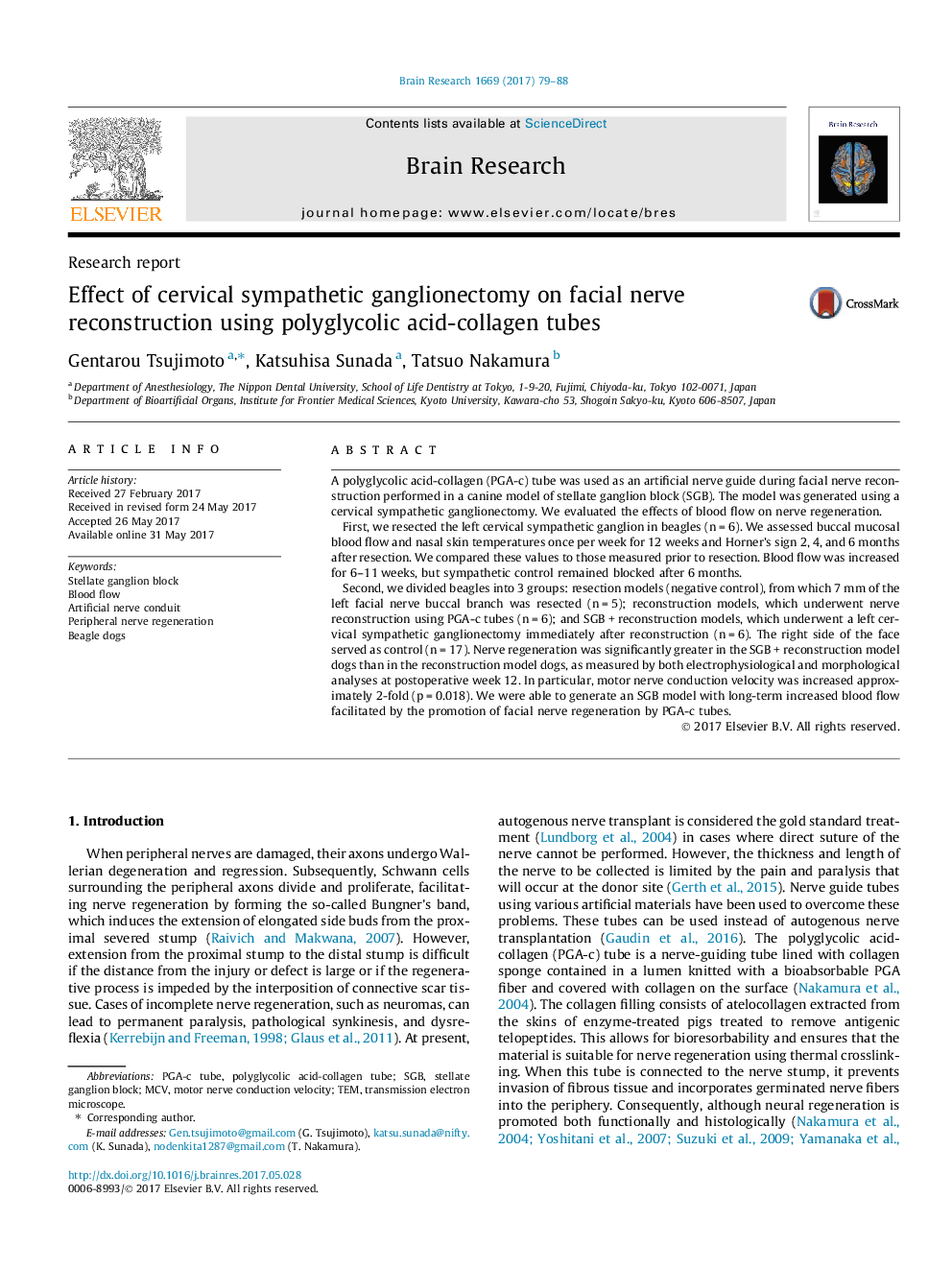| Article ID | Journal | Published Year | Pages | File Type |
|---|---|---|---|---|
| 5736752 | Brain Research | 2017 | 10 Pages |
â¢We generated a stellate ganglion block (SGB) via cervical sympathetic ganglionectomy.â¢SGB led to a 6-11-week increase in facial blood flow.â¢Facial nerves were regenerated using a polyglycolic acid-collagen tube.â¢Morphologic and functional nerve regeneration was promoted by SGB.
A polyglycolic acid-collagen (PGA-c) tube was used as an artificial nerve guide during facial nerve reconstruction performed in a canine model of stellate ganglion block (SGB). The model was generated using a cervical sympathetic ganglionectomy. We evaluated the effects of blood flow on nerve regeneration.First, we resected the left cervical sympathetic ganglion in beagles (n = 6). We assessed buccal mucosal blood flow and nasal skin temperatures once per week for 12 weeks and Horner's sign 2, 4, and 6 months after resection. We compared these values to those measured prior to resection. Blood flow was increased for 6-11 weeks, but sympathetic control remained blocked after 6 months.Second, we divided beagles into 3 groups: resection models (negative control), from which 7 mm of the left facial nerve buccal branch was resected (n = 5); reconstruction models, which underwent nerve reconstruction using PGA-c tubes (n = 6); and SGB + reconstruction models, which underwent a left cervical sympathetic ganglionectomy immediately after reconstruction (n = 6). The right side of the face served as control (n = 17). Nerve regeneration was significantly greater in the SGB + reconstruction model dogs than in the reconstruction model dogs, as measured by both electrophysiological and morphological analyses at postoperative week 12. In particular, motor nerve conduction velocity was increased approximately 2-fold (p = 0.018). We were able to generate an SGB model with long-term increased blood flow facilitated by the promotion of facial nerve regeneration by PGA-c tubes.
